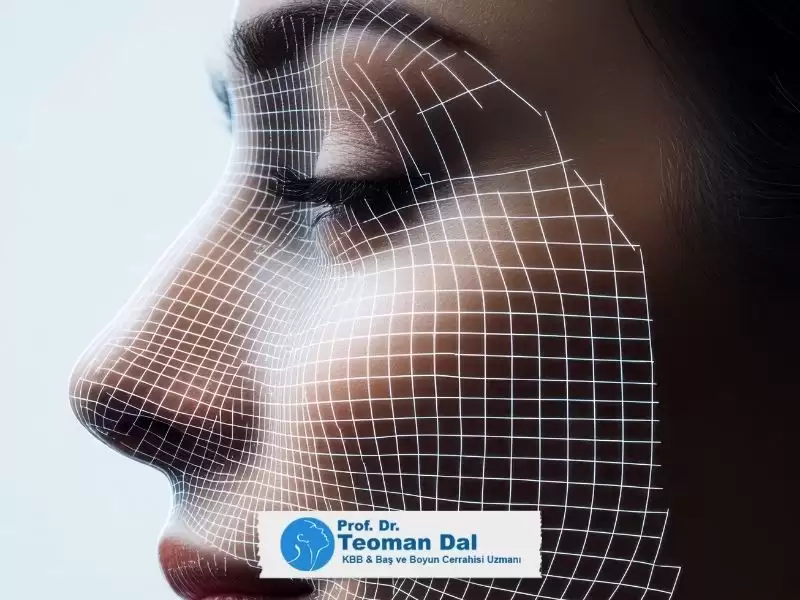Alerjik rinit (alerjik nezle), burun mukozasının mikrobik olmayan bir iltihabıdır. Bu durumun tedavisinde kullanılan yenilikçi yaklaşımlardan biri, özel bir içeriğe sahip yüksek yoğunlukta ışıktan oluşan Rhinolight (Işık Tedavisi veya Fototerapi) yöntemidir.
Rhinolight Nedir ve Nasıl Uygulanır?
Rhinolight, burun mukozasına uygulanan kontrollü bir ışık tedavisidir. Tedavi seansları genellikle birkaç dakika sürer ve ağrısızdır. Çoğu hastada 3 ila 4 seanstan sonra belirgin iyileşmeler gözlenmeye başlar.
Hem mevsimsel (örneğin bahar alerjisi) hem de tüm yıl süren (pereniyal) alerjik nezlesi olan hastalarda Rhinolight tedavisi ile burundaki alerjiye bağlı kaşıntı, akıntı, tıkanıklık ve hapşırık gibi şikayetler 10-12 ay süre ile başarıyla azaltılabilir veya tamamen ortadan kaldırılabilir.
Işık Tedavisi Kimlere Uygulanabilir?
Burun içi ışık tedavisi (Rhinolight), burun içinde aktif enfeksiyon veya ışığın geçişine engel teşkil edecek anatomik bir problem olmayan tüm alerjik nezle hastalarında uygulanabilir. Özellikle aşağıdaki hasta gruplarında Rhinolight bir tedavi seçeneği olarak değerlendirilir:
- Hamile ve emziren kadınlar (ilaç kullanımının sınırlı olduğu durumlarda).
- Karaciğer, böbrek veya kalp hastalığı gibi sistemik rahatsızlıkları nedeniyle ilaç kullanamayan hastalar.
- Mevcut ilaç tedavilerinden fayda görmeyen veya yan etkileri nedeniyle ilaç kullanmak istemeyen hastalar.
- Kortizondan kaçınan hastalar.
Rhinolight Tedavi Protokolleri
Tedavi protokolü, alerjik nezlenin tipine (mevsimsel veya sürekli) göre değişiklik gösterir:
- Mevsimsel Alerjik Nezle: Genellikle polenlerin ortaya çıkmasından 2-3 hafta önce başlanan tedavide, ilk hafta gün aşırı bir seans olmak üzere 3 seans uygulanır. Ardından, 5 hafta boyunca haftada bir seans daha yapılır. Alternatif olarak, ilk 2 haftada toplam 6 seans uygulanır ve ardından 1 hafta ara ile 2 ek seans daha yapılabilir.
- Tüm Yıl Süren (Pereniyal) Alerjik Nezle: Bu tip alerjisi olan hastalarda ise ilk hafta 3 seans yapılır ve ardından 5 hafta boyunca haftada bir seans uygulanır. Ya da ilk 2 haftada 6 seans yapıldıktan sonra 1 hafta ara ile 2 seans daha uygulanır.
Rhinolight tedavisinin etkisi genellikle 1 yıl sürer ve bu sürenin sonunda gerektiğinde tekrar uygulanması mümkündür.

Işık Tedavisi Kimlere Uygulanmamalıdır?
Alerjik nezle tanısı konan bazı hastalarda ışık tedavisinin beklenen faydayı sağlamayabileceği gibi, bazı yan etkileri de olabilir. Bu nedenle aşağıdaki durumlarda Rhinolight tedavisi önerilmez:
- Ciddi burun eğrilikleri (deviasyon) gibi standart tedavilerin uygulanmasını zorlaştıran anatomik sorunları olan hastalar.
- Alerjik nezlenin yanı sıra akut viral veya bakteriyel burun iltihabı (sinüzit) bulunan hastalar.
- Burun içinde veya genizde tümörleri olan hastalar.
- Ciddi burun kuruluğu ve kabuklanma şikayeti olan hastalar.
- Şiddetli kanamaya eğilimi olan hastalar.
- Porfiri, Lupus Eritematozus gibi ışığa karşı aşırı hassasiyeti olan sistemik hastalığı bulunan hastalar.
- Göz ameliyatı sonrası kortizon tedavisi alan hastalar.
Rhinolight, alerjik rinit tedavisinde yeni ve etkili bir alternatif sunarken, her tedavi yönteminde olduğu gibi, uygun hasta seçimi ve uzman kontrolünde uygulanması büyük önem taşır.





